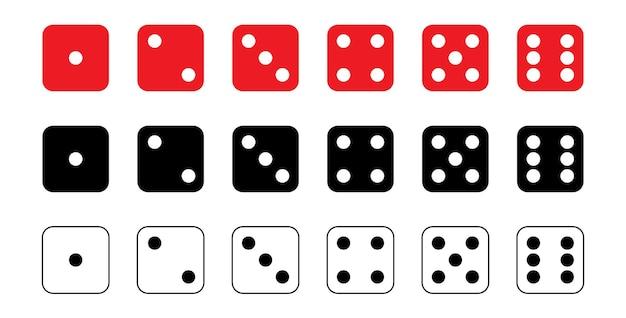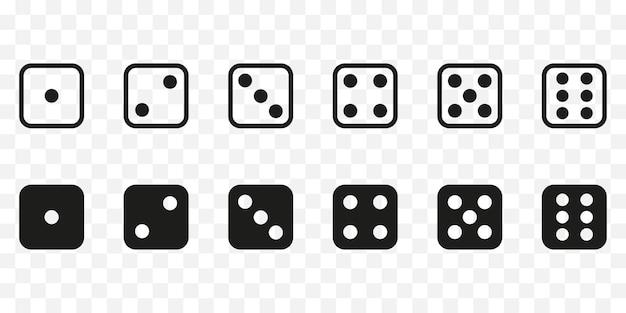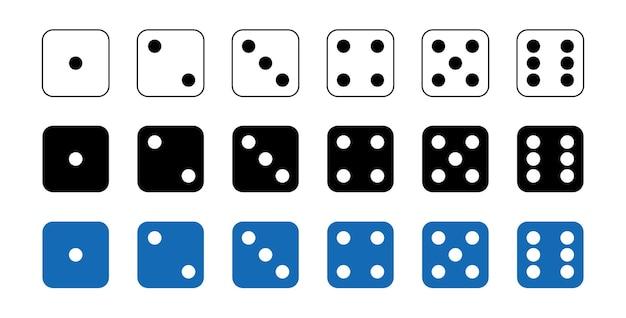Welcome, math enthusiasts! In this blog post, we’ll dive into the fascinating realm of multiples, specifically focusing on the multiples of 1/6. If fractions and multiplication make you scratch your head, fret not! We’ll walk you through the concept, explore various scenarios like finding multiples of other fractions, determine common multiples, and even unveil some exciting tricks to identify multiples with ease. So grab your calculators and let’s embark on this numerical adventure together!
Understanding Multiples of 1/6
If the mention of fractions makes you break out in a cold sweat, fear not! We’re here to make math a little more enjoyable, or at the very least, a little less intimidating. Today, we’re diving into the world of multiples of 1/6. Don’t worry if you haven’t encountered this concept before; we’ll break it down into bite-sized pieces that are easier to digest than a plate of homemade chocolate chip cookies.
Unleash Your Inner Fraction Enthusiast
Think of a multiple as a fancy word for “times tables.” Yes, we’re getting down and dirty with the basics here. A multiple is the product of a given number and any whole number. So, when we’re talking about multiples of 1/6, we’re simply multiplying 1/6 by whole numbers to see what we get.
Crunching the Numbers
Let’s put this into practice, shall we? If we start with the number 1/6 and multiply it by 1, we get 1/6. Multiply it by 2, and boom, we’re looking at 2/6. Still with me? Great! Keep going, and you’ll find that the third multiple of 1/6 is 3/6, followed by 4/6, and so on.
Fear Not the Simplification Process
Now, I know what you’re thinking. “This is all well and good, but fractions need to be simplified!” You’re absolutely right, my friend. Our goal here is to reduce those fractions to their simplest forms. In the case of multiples of 1/6, we can see a pattern emerge. We can simplify 2/6 to 1/3, 3/6 to 1/2, and so on.
How Does This Apply to Real Life
Hey, I get it. Fractions might not seem like the most exciting topic in the world, but understanding multiples of 1/6 can actually be pretty handy. For instance, it can help you divide up a pie into equal slices for you and your friends. Let’s be real, sharing food is serious business, and fractions can be just the right tools to ensure everyone gets a fair portion.
So, there you have it. We’ve explored the wonderful world of multiples of 1/6 and learned how they can be used to divide up your favorite dessert. Remember, math doesn’t have to be scary or boring. Embrace your inner fraction enthusiast, and you’ll soon find yourself tackling mathematical concepts with confidence and a sprinkle of humor. Now, go forth and conquer those fractions like the math wizard you are!
Multiples of Fractions
Let’s dive headfirst into the fascinating realm of multiples of fractions. Grab your calculators and buckle up, because we’re about to embark on a numerical adventure!
What Are Multiples?
Before we unravel the secrets of fractions, let’s make sure we’re all on the same page regarding multiples. In math, a multiple is a number that you get by multiplying another number by an integer. For example, the multiples of 5 are 5, 10, 15, 20, and so on. Easy peasy, right?
Fractions: A Dash of Whimsy in Math
Ah, fractions, those exciting numbers that can make our heads spin faster than a merry-go-round! Fractions are a bit like a puzzle. They consist of two parts: a numerator (the number on top) and a denominator (the number on the bottom). Together, they create a fraction that is either smaller or larger than one whole.
Capturing the Magic of Multiples with Fractions
Now that we have a basic grasp of fractions and multiples, let’s explore the enchanting world where these two intertwine. Brace yourself for some numerical wizardry!
Multiples of 1/6: Tiny Treasures
Our focus today lies on multiples of 1/6. Why 1/6, you ask? Well, why not? Every fraction deserves a shot at being in the spotlight! So, let’s shine a glorious light on this minuscule yet marvelous fraction.
The Playfulness of Multiples
When it comes to multiples of 1/6, things can get pretty playful. Picture yourself in a candy store, surrounded by an abundance of delicious treats. Well, think of the multiples of 1/6 as those delectable candies. They come in all shapes and sizes, tempting and teasing you with their mathematical charm.
Dancing with Denominators
In the waltz of multiplication with 1/6, denominators play an important role. They determine the range of our delightful dance. Imagine the denominators as your dance partners, each taking turns to whirl around the floor with the numerator, resulting in an impressive array of multiples.
The Multiples Unleashed
Hold on tight as we take a whirlwind tour through the mesmerizing world of multiples of 1/6:
- Multiples of 1/6: 1/6, 2/6, 3/6 (which simplifies to 1/2), 4/6 (equivalent to 2/3), and so on.
- As we journey higher into the numerical heavens, the multiples continue to amaze: 5/6, 6/6 (equivalent to 1 whole), 7/6, 8/6 (simplified to 4/3), and beyond.
The Beauty of Patterns
When you examine multiples of 1/6 closely, you’ll uncover a world of hidden patterns. Just like snowflakes falling delicately from the sky, each multiple is unique, but they all follow a similar structure. That’s the beauty of numbers — they have a tendency to reveal their elegant secrets, even when you least expect it.
Concluding Thoughts
Here at the intersection of multiplication and fractions, we have discovered the delightful realm of multiples of 1/6. Remember, math is not just all numbers and calculations; it’s a magical place where imagination and logic come together in perfect harmony. So, next time you spot a fraction, crack a smile and give it a little nod, for you now know the secret dance it shares with multiples. Keep exploring, keep marveling, and embrace the whimsical wonders of mathematics!
Multiples of 6 from 1 to 100
If you’ve ever wondered what happens when you multiply numbers by 6, you’re in for a treat! In this section, we’ll explore the magical world of multiples of 6 from 1 to 100. Get ready to be amazed, entertained, and maybe even learn a thing or two along the way!
The Power of 6: A World of Possibilities
Multiples of 6 are like the hidden gems of the number world. They may not be as flashy as multiples of 7 or as mysterious as multiples of 9, but don’t underestimate their power! With multiples of 6, you’ll find patterns, symmetries, and a touch of quirkiness that will leave you in awe.
Six-packs and More: Fun Facts about Multiples of 6
Even and Divisible
Did you know that all the multiples of 6 are even numbers? That’s right, no oddballs here! This means that if you have a number and it’s divisible by both 2 and 3, then congratulations, you have yourself a multiple of 6. It’s like hitting two birds with one stone, but in a much friendlier way.
Dance of the Digit Sum
One fascinating thing about multiples of 6 is their digit sum. No matter how big the multiple is, if you add up all its digits, you’ll always end up with a multiple of 3. Talk about a harmonious dance of numbers! It’s like these multiples have a secret pact with the number 3, weaving their way into a mesmerizing pattern that never fails to captivate our mathematical senses.
The Sneaky Trickster
When it comes to divisibility, multiples of 6 are like the pranksters of the number world. They have an uncanny ability to trick you into thinking a number is divisible by 6 when it actually isn’t. How, you may ask? Well, hold onto your calculators, because here’s the secret: for a number to be divisible by 6, it needs to be divisible by both 2 and 3. So, that means even though 25 is divisible by 5 and 125 is divisible by 25, neither of them is divisible by 6. Sneaky, right?
Six Times a Charm
Let’s take a quick trip down memory lane and revisit our multiplication table. Remember those times when you had to memorize all those pesky multiplication facts? Well, fret not! Multiples of 6 come with a little shortcut. No need to remember separate facts for 6 times 7 and 7 times 6 because, guess what, they’re both 42! It’s like hitting the jackpot in the world of multiplication. Your mental math skills will thank you later.
Putting It All Together: The 6-y Journey
As we bid farewell to the multiples of 6, we can’t help but feel a sense of gratitude for their wondrous presence in our mathematical journey. From their even and divisible nature to their quirky tricks and shortcuts, multiples of 6 have surely left an indelible mark on our numerical hearts.
So, the next time you encounter a multiple of 6, give it a little nod and appreciation for all the joy it brings. And remember, while the world may be full of infinite possibilities, multiples of 6 will always be there to add a touch of delightful symmetry and humor to our mathematical adventures.
What Are the Multiples of 1/4
The world of fractions can be intimidating, but fear not! Let’s tackle the topic of multiples of 1/4 and make it as simple as slicing a piece of pie. So grab your math hat and let’s dive in!
Understanding Multiples
Before we jump into the multiples of 1/4, let’s quickly refresh our memory on what multiples are. In the world of fractions, a multiple is simply a number that can be evenly divided by another number. Think of it as finding those perfect matches where no one is left with a remainder. So, when we talk about the multiples of 1/4, we’re looking for numbers that can be divided by 1/4 without any leftover bits.
Multiples that Make You Go “Quarters!”
Now, let’s uncover the eye-catching multiples of 1/4 that will make you go “quarters!” In the land of fractions, you’ll notice a delightful pattern emerge. Just like coins rattling in your pocket, the multiples of 1/4 chime with a predictable beat.
1/4 x 1 = 1/4
Our journey begins with the first multiple of 1/4: 1/4 itself. That’s right, the fraction stays as sweet and compact as a single slice of pizza in a whole pie.
1/4 x 2 = 1/2
Moving right along, we find ourselves biting into the next slice: 1/2. This delectable multiple of 1/4 is big enough to satisfy a hungry appetite yet leaves you eager for more.
1/4 x 3 = 3/4
As we continue our fraction feast, the thirds arrive with a burst of flavor. The next multiple of 1/4 waltzes in with a touch of elegance: 3/4. It’s as if this fraction is decked out in a top hat and tails!
1/4 x 4 = 1
Ah, the fourth multiple of 1/4 brings us to a whole number: 1. Think of it as the grand finale of our fraction extravaganza. It’s like reaching that last bite of a delicious dessert – pure satisfaction.
Marching Forth with More Multiples
But wait, there’s more! The multiples of 1/4 keep popping up like a never-ending game of Whac-A-Mole. Brace yourself for a quickfire round of additional fractions that will surely make your head spin:
1/4 x 5 = 5/4
1/4 x 6 = 3/2
1/4 x 7 = 7/4
1/4 x 8 = 2
1/4 x 9 = 9/4
1/4 x 10 = 5/2
Closing Thoughts
Congratulations, math maestro! You’ve conquered the world of multiples of 1/4 with flair, finesse, and a touch of humor. We hope this journey through the fractions gave you a deeper understanding of how they work and an appetite for more mathematical adventures. Keep slicing through those multiples like a pro!
Subsection: Exploring Fractions as Multiples of 1/16
Let’s dive into the fascinating world of fractions and explore the unique realm of numbers that are multiples of 1/16. Prepare to have your mathematical taste buds tantalized by this delightful subsection!
Understanding the Magic of 1/16
When it comes to fractions, one-sixteenth may not be the first number that springs to mind. But don’t underestimate the power and charm of this quirky little fraction! One-sixteenth is a fraction that represents one part out of sixteen equal parts. Just like a pie divided into sixteen equally-sized slices, each representing one-sixteenth of the whole, this fraction has a distinct character that sets it apart from others.
Breaking Down the Sixteenth Magic
Now, let’s dissect this magical fraction into smaller, bite-sized chunks for a clearer understanding. When we break down 1/16 into its decimal equivalent, we get 0.0625. That’s right – four decimal places make up this unique fraction! It may seem small and insignificant at first glance, but don’t be fooled. There’s more to this fraction than meets the eye.
Fractions that Harmonize with 1/16
One fascinating aspect of fractions is their ability to harmonize and work together in numerical symphony. So, which fractions waltz harmoniously with our star, 1/16? Well, let’s take a look at a few examples:
1. 2/32 – Double the Fun
Two thirty-seconds is precisely the same as 1/16. In fact, these two fractions are mathematically equivalent. They’re different ways of expressing the same value, just like two different paths leading to the same destination.
2. 4/64 – Multiplying the Melody
If we simplify it, four sixty-fourths is equal to 1/16. It’s amazing how numbers can be multiplied or divided, yet still hold the same significance. It’s like finding different keys on a piano that, when played together, create an enchanting harmony.
3. 8/128 – Symphony of Eighths
Lastly, let’s not forget about eight one-hundred-twenty-eighths. When reduced, it is equivalent to 1/16. Isn’t it incredible how different fractions can unite and create the same value? It’s like a musical ensemble, where each instrument plays its part to create a beautiful symphony.
The Everyday Influence of 1/16
Now that we’ve explored the deep mathematical roots of 1/16, let’s see how this fraction sneaks its way into everyday life without us even realizing it.
1. Measurements That Matter
Ever found yourself in a situation where you needed to measure something really small, like a bead or a molecule? Well, chances are you’ve encountered the 1/16 fraction without even knowing it. Many scientific measurements rely on this tiny fraction to provide accurate results in specialized fields like chemistry, physics, and engineering.
2. Crafty Creativity
If you’re an arts and crafts enthusiast, you’ve probably come across the magical world of quilling. Quilling is an art form that involves rolling paper strips and shaping them into intricate designs. Guess what? Those quilling strips are often manufactured in 1/16 inch widths, enabling crafters to create precise and delicate works of art.
3. Woodworking Wonders
In the realm of woodworking, precision is key. When it comes to sizing wood for projects, it’s not uncommon to find boards cut to a thickness of 1/16 inch. This allows for fine adjustments and impeccable craftsmanship that sets woodworking enthusiasts apart from the rest.
Conclusion
As we conclude this engaging exploration into fractions as multiples of 1/16, we’ve discovered the remarkable role this little fraction plays in both the world of numbers and everyday life. From its unique decimal representation to its harmonious relationship with other fractions, 1/16 has shown us that even the smallest fractions can have a tremendous impact. So, the next time you encounter a slice of pie or embark on a creative endeavor, take a moment to appreciate the enchantment of fractions – specifically, the magical multiple of 1/16.
What is the Common Multiple of 1 and 6
When it comes to numbers, it’s always more fun to think of them as sparkly superheroes with amazing powers rather than as dull, lifeless figures on a page. So, let’s dive into the captivating world of multiples to uncover the mysteries of the common multiple of 1 and 6!
Understanding the Mighty 1 and 6
Before we can discover their common multiple, let’s get to know our numerical protagonists a bit better. The number 1 is like a chameleon, blending into any mathematical equation effortlessly. It’s an identity, a unit, and some might even say, the king of all numbers (but shh, don’t tell the others!). On the other hand, the number 6 is like a social butterfly, always divisible by 1, 2, 3, and itself, forming a tight-knit group with its fellow even numbers.
Unveiling the Common Multiple
Now that we know a little about our numerical heroes, let’s find out where their paths intersect. The common multiple of 1 and 6 is the smallest number that can be evenly divided by both. In simpler terms, it’s the lowest number that both 1 and 6 can agree upon. And guess what? They’ve picked the number 6 as their hangout spot! You see, 1 can divide evenly into 6 (because 6 divided by 1 equals 6), and 6 can divide evenly into 6 (because 6 divided by 6 equals 1). It’s like a win-win situation for both of them!
Taking a Look at Multiples
To fully grasp the concept of the common multiple, let’s take a closer look at multiples. A multiple is what we get when we multiply a number by another number. For example, the multiples of 1 are 1, 2, 3, 4, 5, 6, and so on. We get these multiples by multiplying 1 by different numbers (1 x 1, 1 x 2, 1 x 3, and so forth). Now, let’s look at the multiples of 6: 6, 12, 18, 24, 30, and onwards. As you can see, 6 is present in both lists. It’s like a secret agent, doubling as a multiple for both 1 and 6!
How Does the Common Multiple Help
The common multiple of 1 and 6 may seem like a small mathematical detail, but it actually serves a greater purpose. It helps us find the least common multiple (LCM) of other numbers as well. The LCM is the smallest multiple that two or more numbers have in common. By understanding the common multiple of 1 and 6, we can apply the same principle to finding the LCM of any other set of numbers.
Wrapping Up the Marvelous World of Multiples
Who knew that diving into the world of multiples could be so entertaining and enlightening? We’ve discovered that 1 and 6 share a common multiple of 6, and we’ve also learned a little about multiples and the usefulness of finding common multiples. So, the next time you encounter numbers playing hide-and-seek in the vast mathematical landscape, remember that their common multiples might just be the key to unlocking their secrets!
How to Find Multiples of a Fraction
Finding multiples of a fraction may sound complicated, but fear not! With a little bit of math magic, you’ll be a master at it in no time. So grab your thinking cap and let’s dive in!
Understanding Multiples
Before we can find multiples of a fraction, it’s important to know what multiples are. In simple terms, multiples are numbers that can be divided evenly by another number. For example, multiples of 3 include 3, 6, 9, 12, and so on.
Step-by-Step Guide
Now that we have our multiples lingo down, let’s break it down into simple steps:
Step 1: Identify the Fraction
First things first, we need to identify the fraction we want to find multiples of. Let’s use the example of 1/6. It’s a cool fraction that’s a piece of the whole pie, or should I say pie slice!
Step 2: Start with the Denominator
In this case, the denominator is 6. To find multiples of a fraction, start by multiplying the denominator by any whole number. Let’s start with 1 and see where it takes us. 6 multiplied by 1 gives us 6 – the first multiple. Nice and easy, right?
Step 3: Rinse and Repeat
To find more multiples, repeat Step 2 and keep increasing the whole number you’re multiplying by. In this case, let’s multiply 6 by 2. 6 multiplied by 2 gives us 12 – the next multiple. We’re on a roll!
Step 4: Keep on Going!
You can keep finding multiples by repeating Step 3 as many times as you want or until you reach your desired range. Remember, it’s all about multiplying the denominator by larger and larger whole numbers.
Just a Fraction of Fun!
Finding multiples of a fraction may seem like a daunting task, but once you get the hang of it, it’s actually quite enjoyable! It’s like going on a treasure hunt to uncover all those beautifully divisible numbers.
So the next time you come across a fraction, don’t be intimidated. Arm yourself with the knowledge of multiples and conquer that math mountain with confidence. Happy fraction hunting!
That’s all folks!
Listing the Next Four Multiples of the Fraction 2/6
Now that we’ve dipped our toes into the fascinating world of fractions, it’s time to dive a little deeper. In this section, we’ll explore and unveil the next four multiples of the fraction 2/6. So, grab your calculator, put your mathematical hat on, and let’s crunch some numbers!
Multiple #1: 4/6
Our first multiple of the fraction 2/6 is 4/6. Two divided by six might raise an eyebrow or two, but fear not! Simplifying fractions is like finding a hidden treasure. And in this case, the treasure lies in dividing both the numerator and the denominator by their greatest common divisor, which is 2. As a result, our fraction becomes 2/3, and it’s a shining example of how elegance can be found within simplicity.
Multiple #2: 6/6 (Also known as 1)
Hold onto your hats, folks — we’ve stumbled upon a fraction that transcends the realm of fractions. Behold the mighty 6/6! You heard it right; 6 divided by 6 equals 1. In the enchanted world of fractions, this is as close to a superhero as it gets. Just like Clark Kent dons his cape to become Superman, the humble 6/6 dons a cloak of unity to transform itself into the integer 1. Impressive, isn’t it?
Multiple #3: 8/6
If your mathematical taste buds are tingling from the previous multiples, get ready for another tantalizing treat. Our third multiple is 8/6. Once again, we can simplify this fraction by dividing both the numerator and the denominator by their greatest common divisor, which is 2. After the transformation, we find ourselves face-to-face with an intriguing fraction: 4/3. This fraction might be a little rebellious, not conforming to the neat and tidy world of integers, but hey, life would be boring without a little bit of chaos.
Multiple #4: 10/6 (Also known as 5/3)
We’ve reached the final mile in our delightful fractions journey. Our last multiple is 10/6, and just like before, we’ll simplify it by dividing both the numerator and the denominator by their greatest common divisor. In this case, it’s 2 once again. And what do we get? A delightful fraction known as 5/3. Now, this fraction might seem a bit odd if you’re used to working solely with integers, but it’s a reminder that diversity and beauty can be found in the smallest of fractions.
Wrapping Up
Congratulations! You’ve now mastered finding the next four multiples of the fraction 2/6. You’ve witnessed fractions morph into integers and observed their colorful, simplified forms. But remember, mathematics is a vast universe, with countless fractions waiting to be explored. So, buckle up and prepare for more exciting adventures in the realm of numbers. Until then, may fractions continue to enrich your journey through the fascinating world of math!



